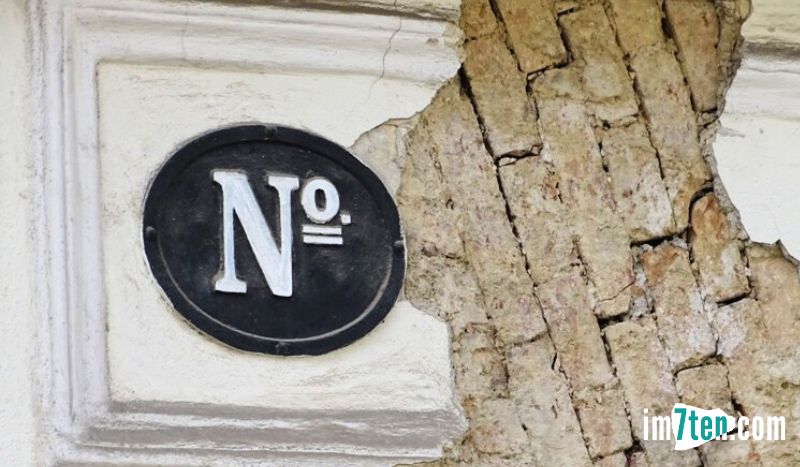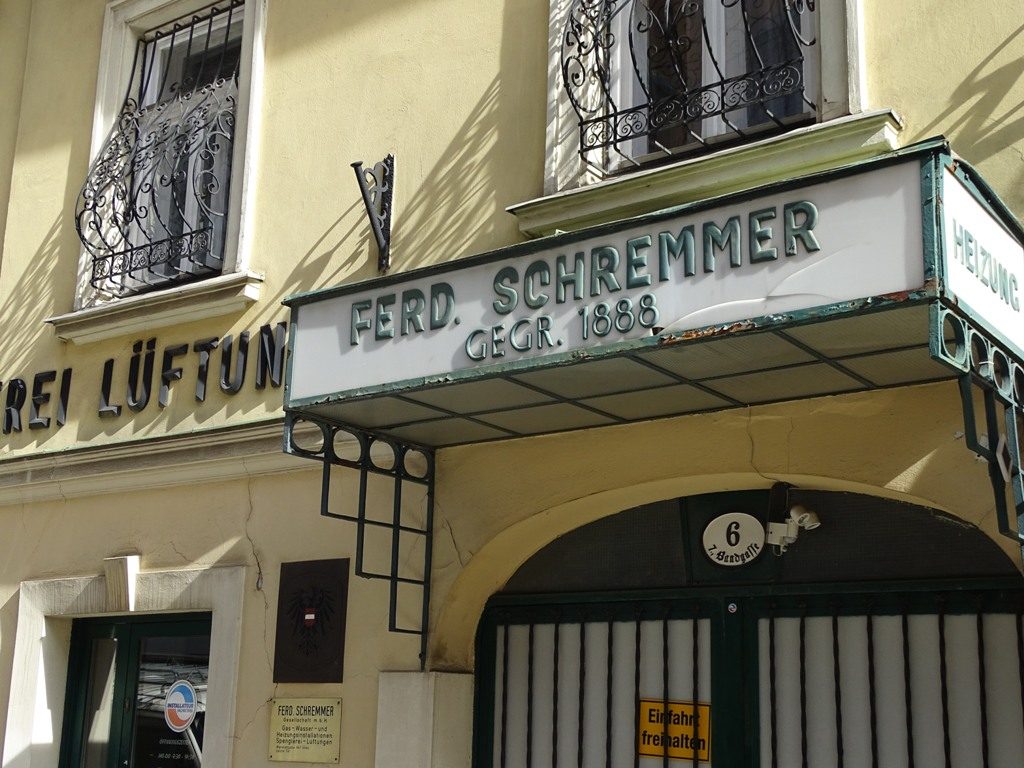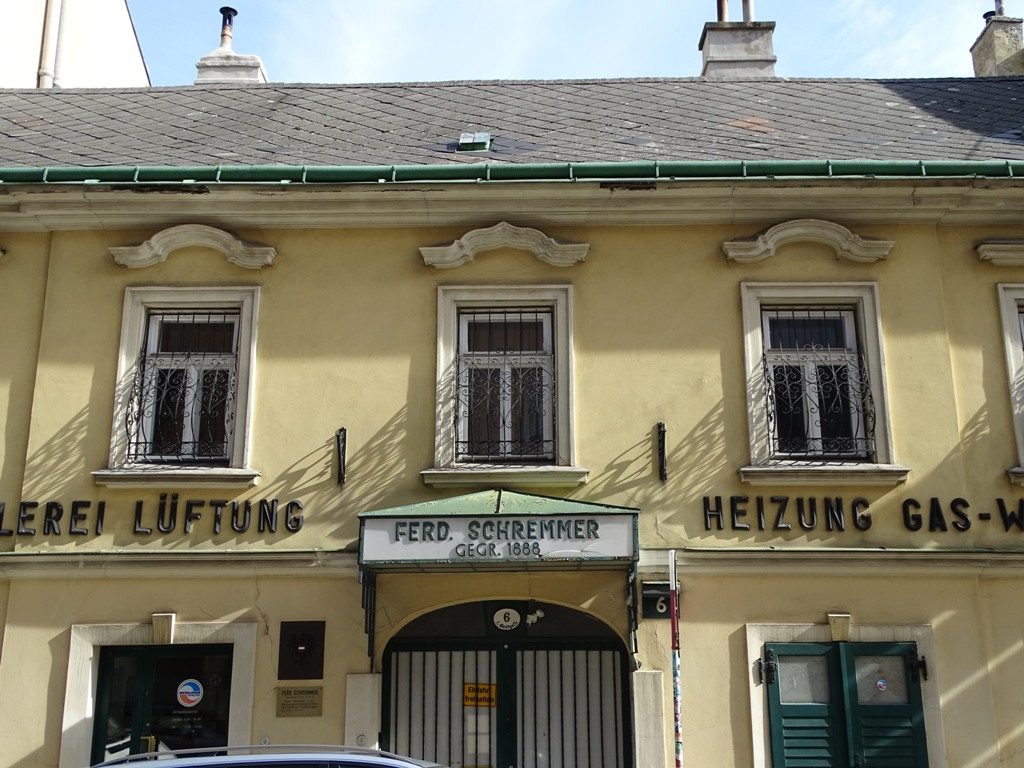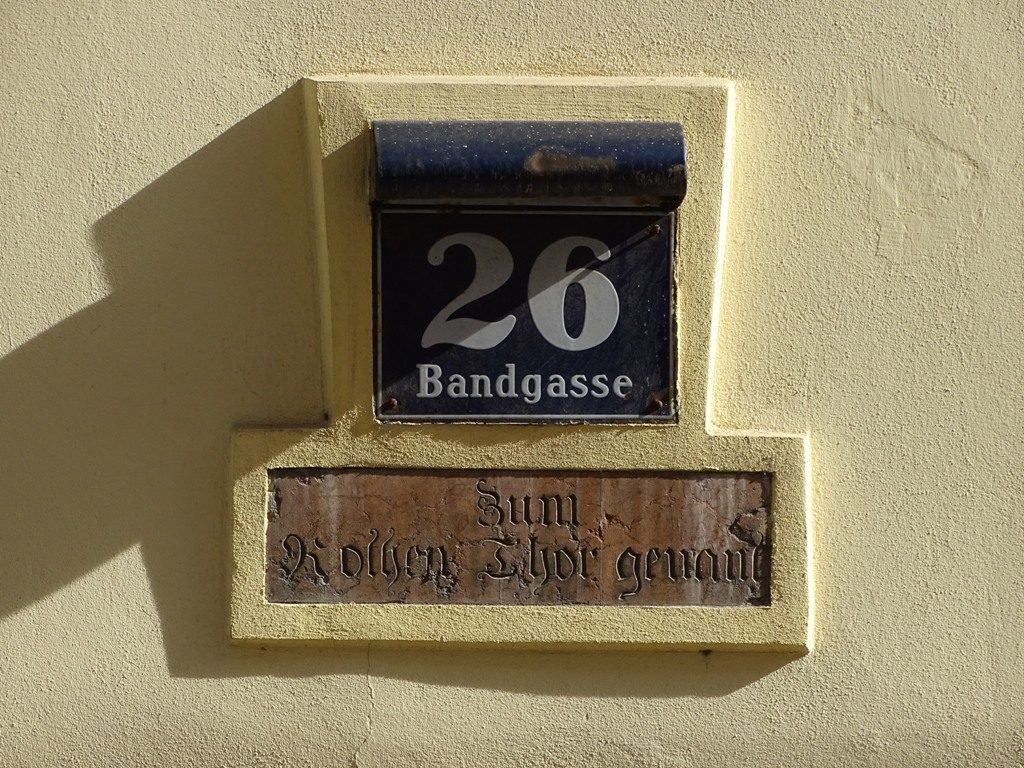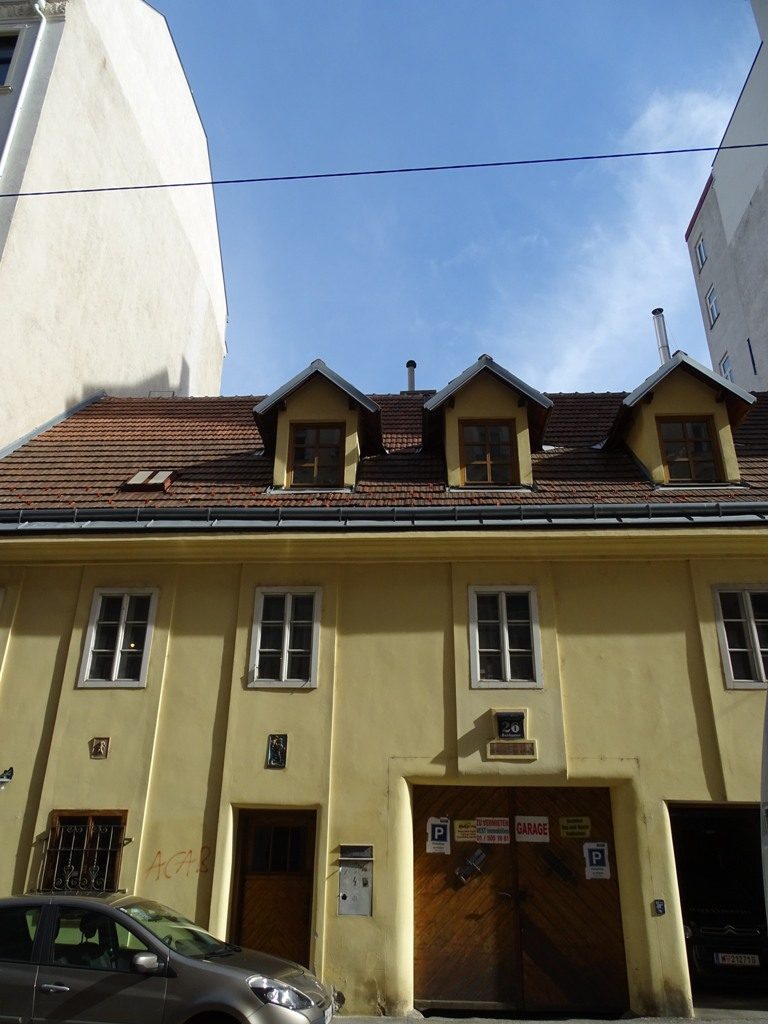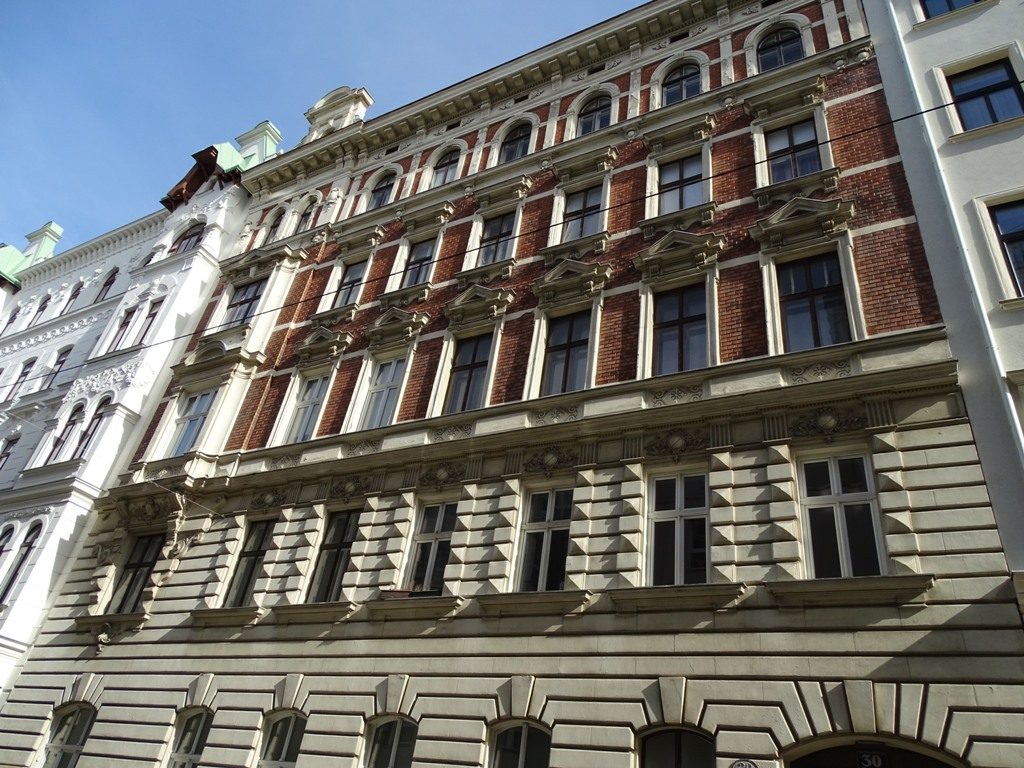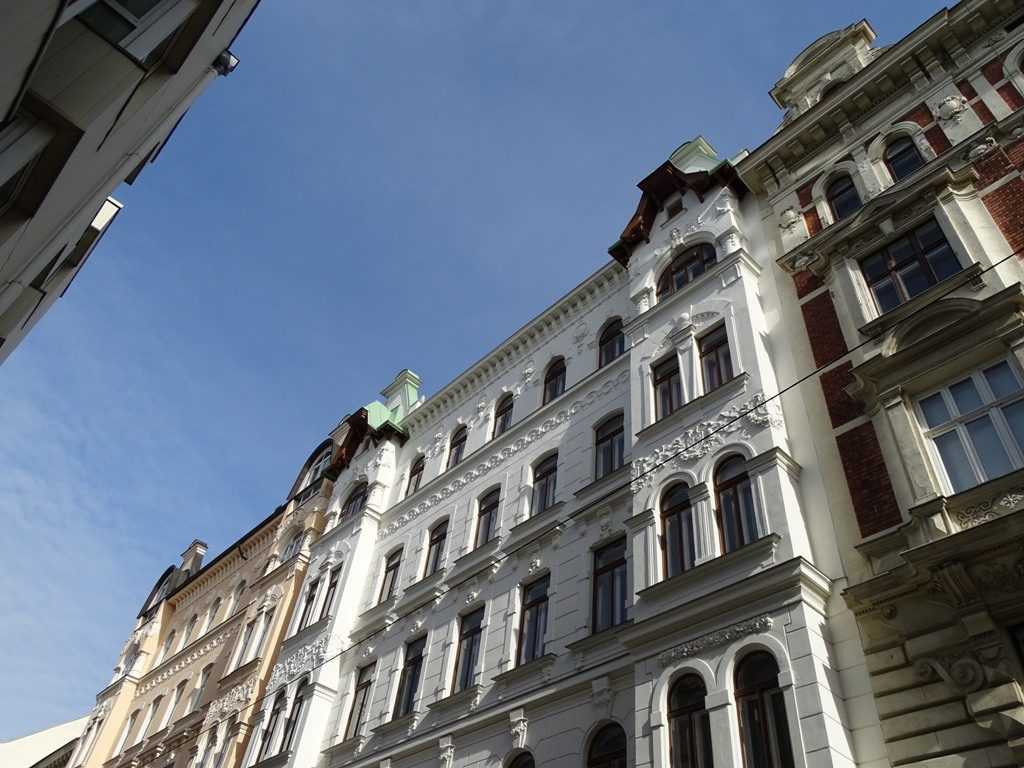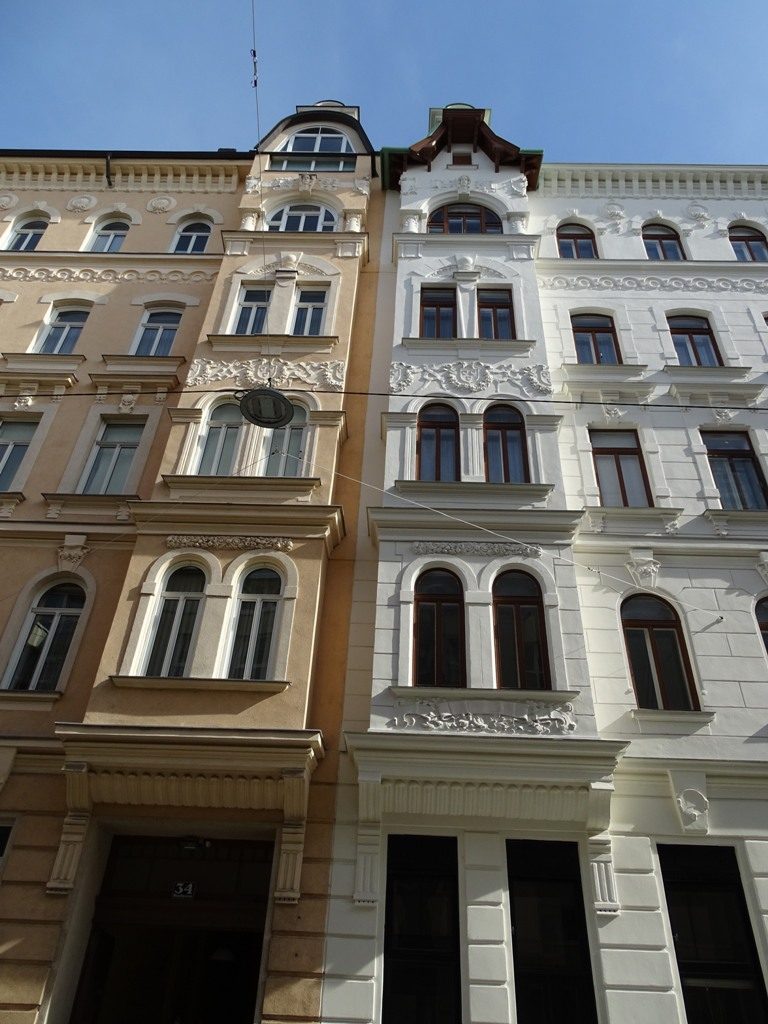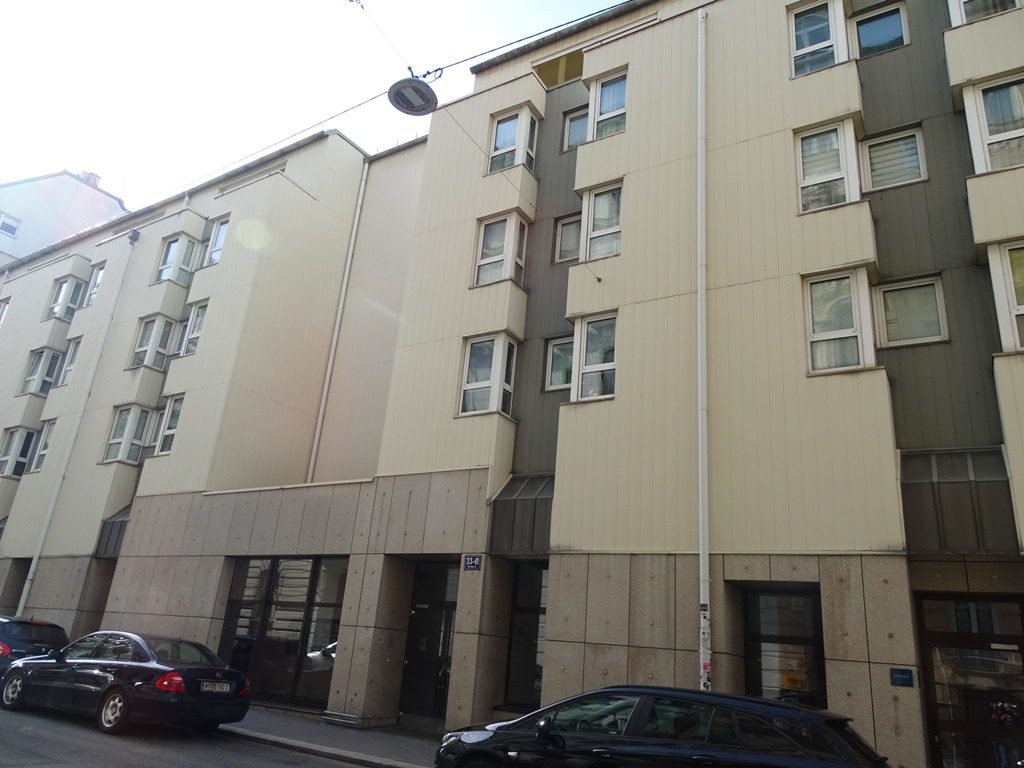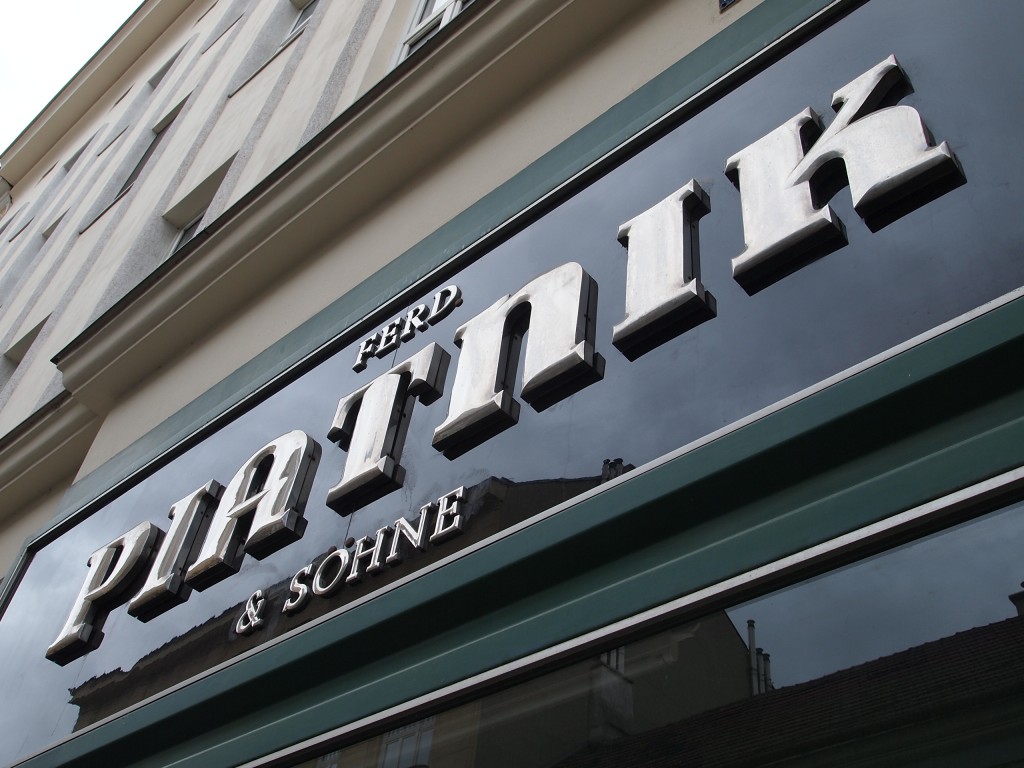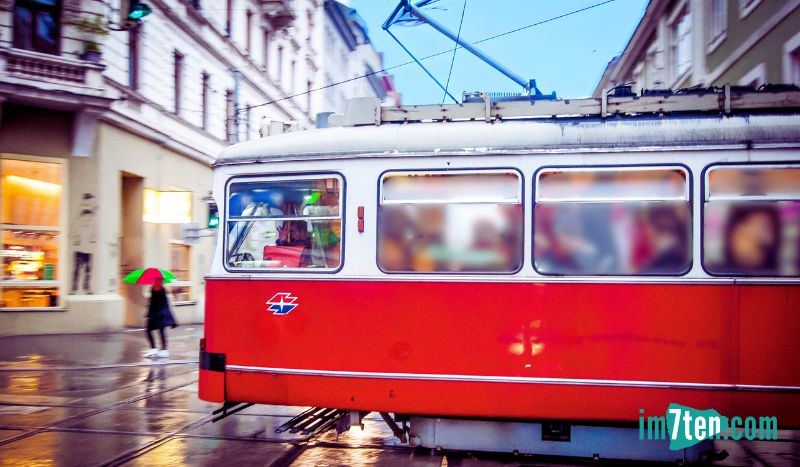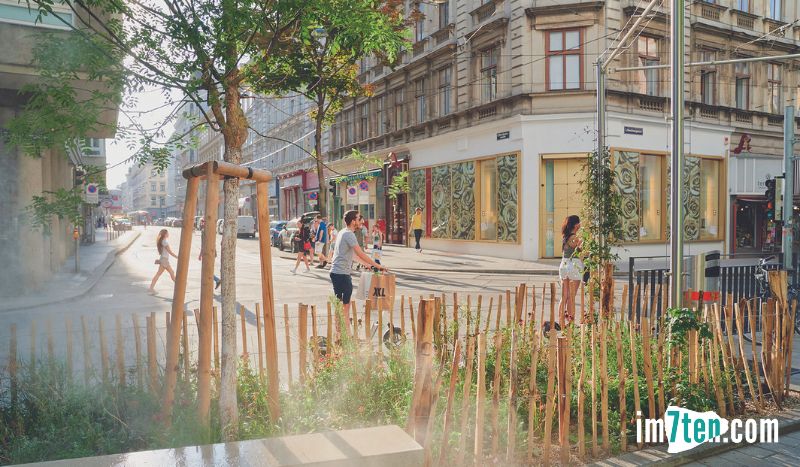Parallel and in the middle of Hermanngasse and Zieglergasse, bordered by Burggasse and Seidengasse—there runs Bandgasse, which was given its name in 1862. It was named after the ribbon factories that were located there. im7ten has shed light on the history of the street and taken a look at it today.
The first buildings on today’s Bandgasse were built around 1720. The street in the Viennese suburbs was first known as Lagenkellergasse, then as Windmühlelzwerchgasse, and subsequently as Herrengasse, before it was given its current name in 1862—one year after the Neubauer suburbs were incorporated into Vienna.
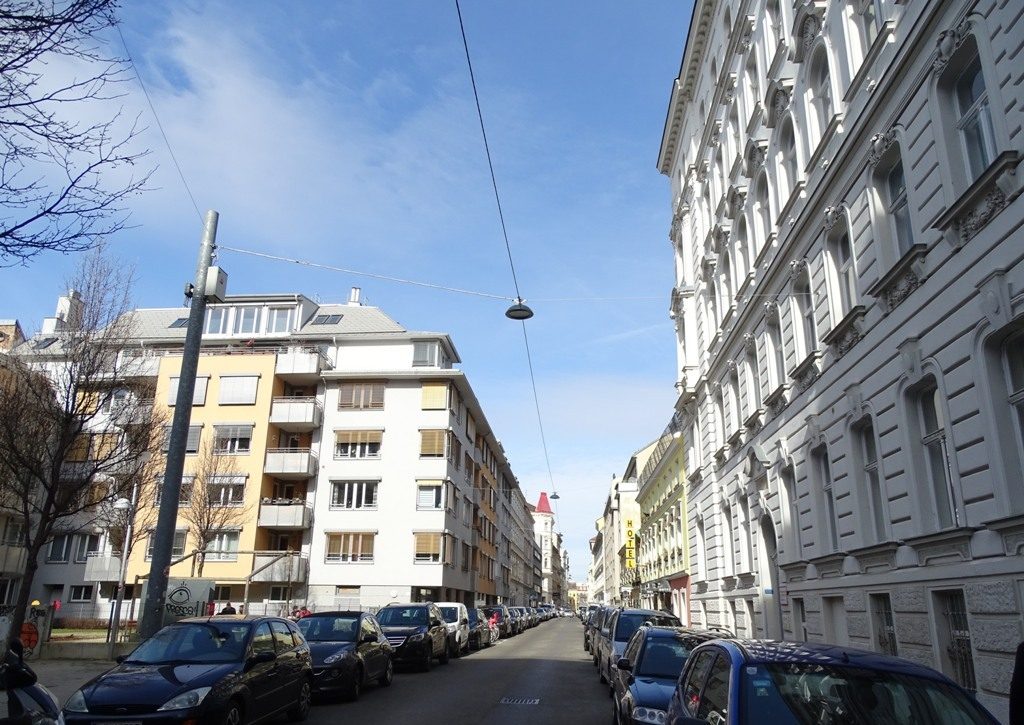
Historical buildings | Bandgasse then and now
In Bandgasse, as in all the other streets in the 7th district, you can admire beautiful old facades. With architectural elegance, the old buildings are strung like pearls along the narrow alley. But not all of the historical buildings can still be found here today. im7ten has made a then and now comparison based on the Wien Geschichte Wiki (Vienna history wiki) entry on Bandgasse and entries in ANNO, the archive of historical newspapers and magazines of the Austrian National Library:
Bandgasse 1, 1070 Vienna, Austria
The inn “Zum Maler” was once located at Bandgasse 1. The business of the entrepreneur Johann Gegendorfer, who had weaving combs manufactured here, was also located here, as can be seen in the Vienna World Exhibition newspaper of February 8, 1873. Today, children play there in the park and playground called Dorothea-Neff-Park, while others are invited to rest and soak up the sun on the benches.
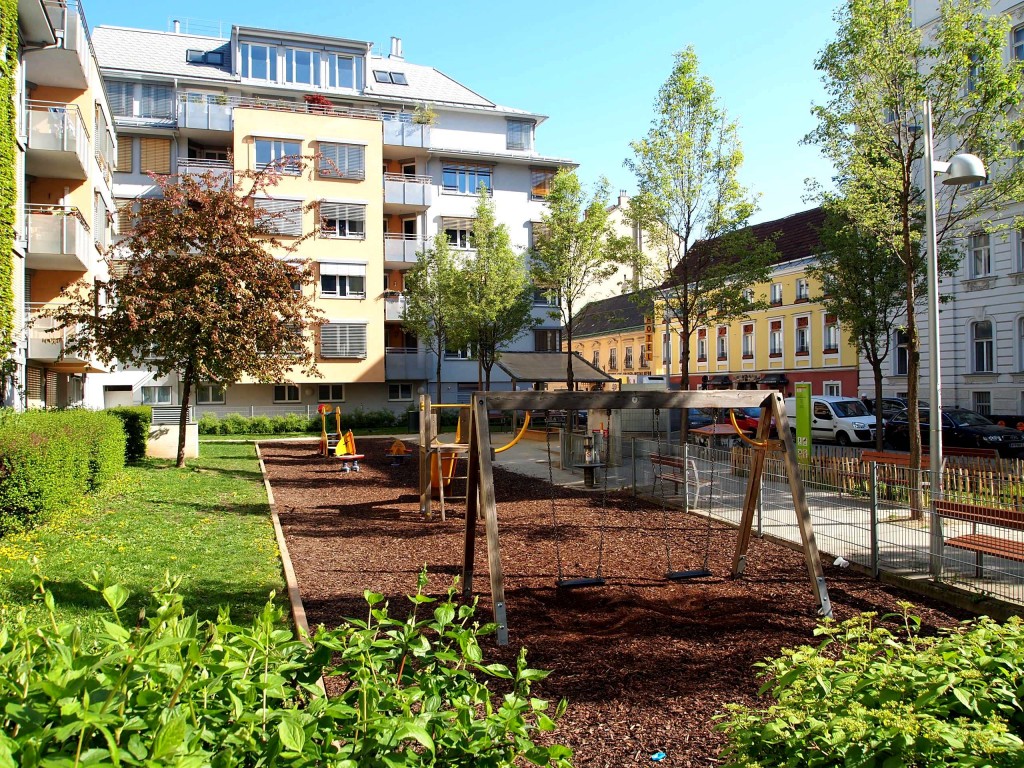
Bandgasse 1, 1070 Vienna, Austria
At Bandgasse 4 there once stood the house with the nickname “Zum schwarzen Elefanten” (The Black Elephant), where one could see “reliefs of Greek and Roman deities in the semicircular lunettes above the windows on the first floor” (source: Wien Geschichte Wiki: Bandgasse, last accessed on August 8, 2024). Today the Hotel am Brillantengrund is located here, which accommodates many visitors to the district in its 34 rooms in 50s to 70s chic.
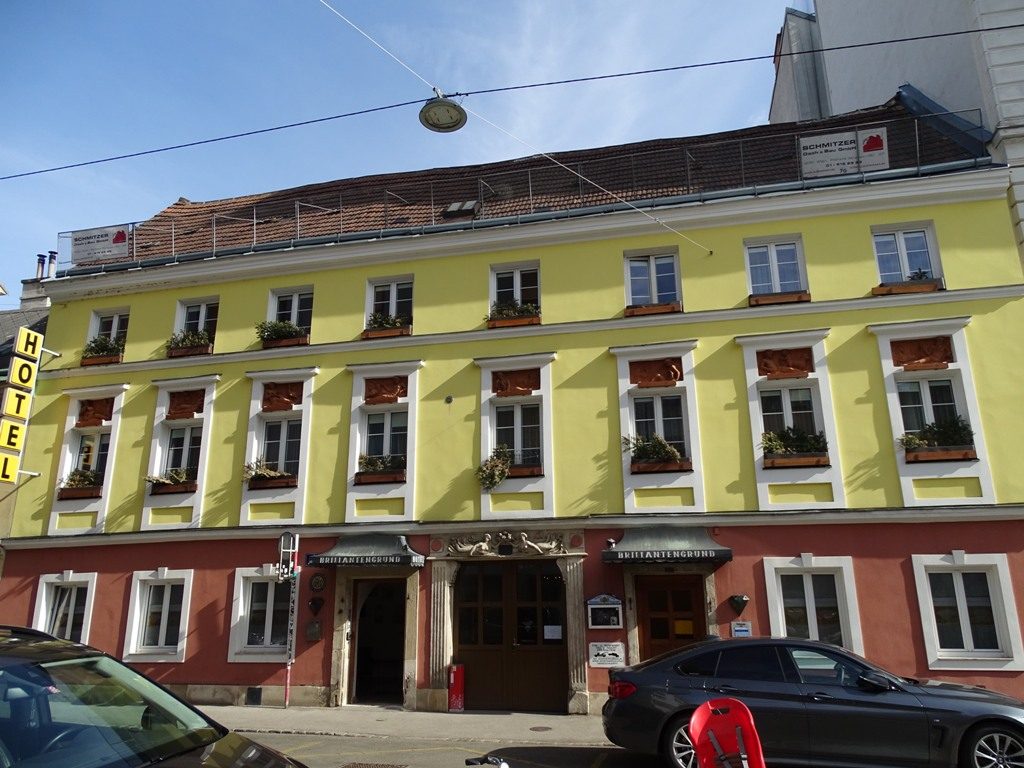
Bandgasse 5, 1070 Vienna, Austria
Around 1900, Carl Beitel worked as a bookbinder and leather haberdashery worker at Bandgasse 5—”Binding books well and beautifully,” according to an advertisement in Der Naturfreund from 1901.
Bandgasse 6, 1070 Vienna, Austria
The house at Bandgasse 6, which houses the Schremmer company, presents itself in a historical guise. Together with the neighbouring hotel, the two buildings form a visual unity against the otherwise much higher buildings on Bandgasse.
Bandgasse 8, 1070 Vienna, Austria
At Bandgasse 8 we can find a building belonging to the municipality of Vienna, designed by the architect Rudolf Münch. It was built in 1967. The same address once housed the house with the nickname “Zur blauen Weintraube” (The Blue Grape), in which lived one of the prominent personalities who called Bandgasse their home address: Benedikt Hainrizi (also known as Benedikt Henrici or Johann Henrici) was an architect and was responsible for the construction of the high altar of the Schottenfeld church based on a design by Johan Baptist von Hagenauer. Benedikt Hainrizi died in the summer of 1799 during the construction of the tower of the Stiftkirche, located on Mariahilfer Straße 24 and the corner of Stiftgasse 2.
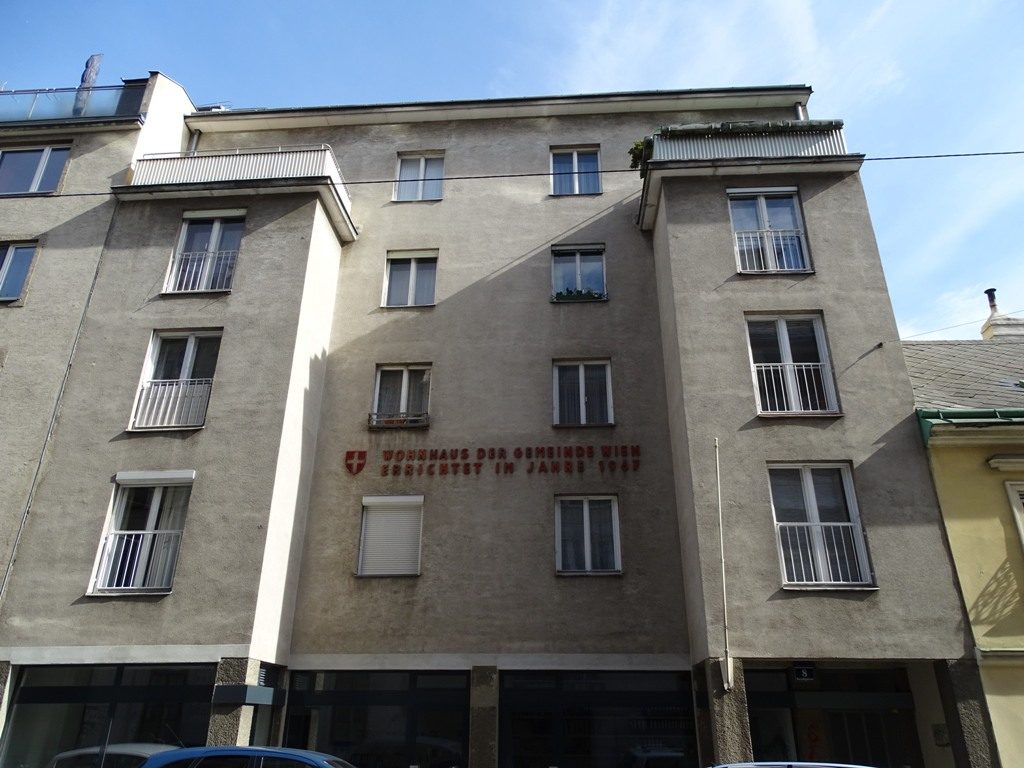
Bandgasse 10, 1070 Vienna, Austria
Except for a few geometric reliefs, the house wall at Bandgasse 10 is rather plain. Even if the building cannot compare with the aesthetics of other houses in the street, a look upwards suggests that there must be a wonderful view of the area from the roof terrace.
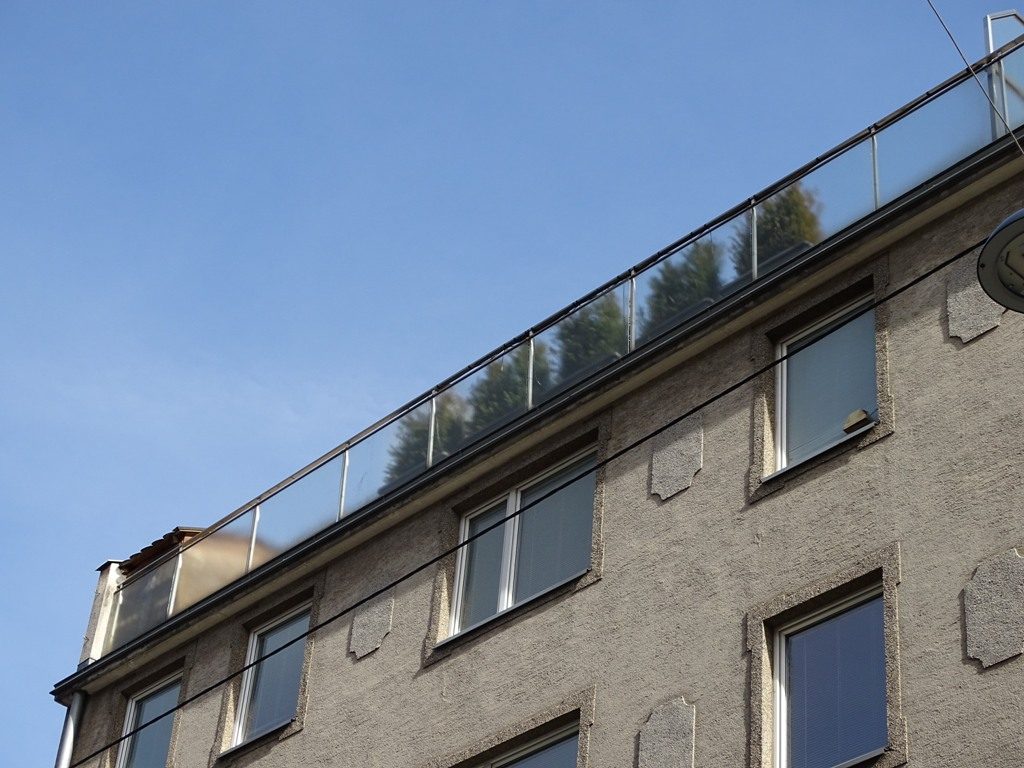
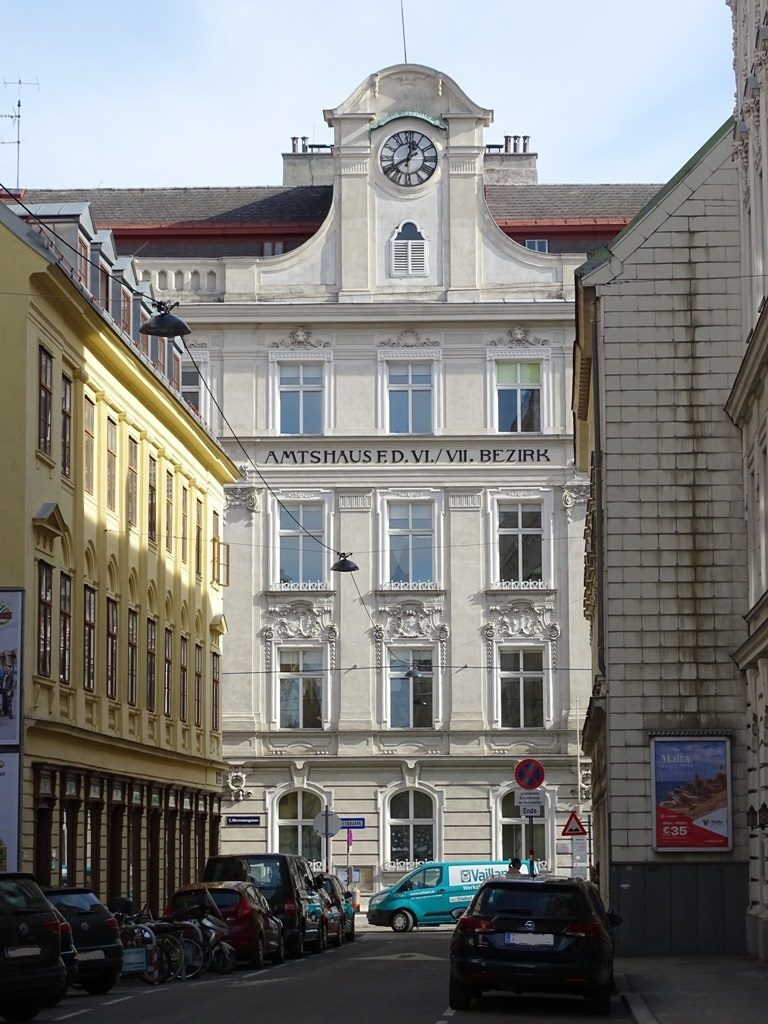
Bandgasse 26, 1070 Vienna, Austria
On the wall of Bandgasse 26 you can see the inscription “Zum Rothen Tor genant” (meaning: This house is called “the red door”). A picture from the Austrian National Library Picture Archive shows the house in 1907. It’s worth seeing! The house, which looks tiny next to its neighbours, has retained much of its original charm.
Bandgasse 27, 1070 Vienna, Austria
Another entrepreneur who, like 53,000 others, exhibited at the Wiener Weltausstellung in 1873 (Vienna World Exhibition) was Andreas Geppert, who made artificial flowers and feather ornaments at Bandgasse 27.
Bandgasse 28–31 | Bandgasse/Kandlgasse 4, 1070 Vienna, Austria
Bandgasse was a stronghold of printing. The Erste Wiener Vereinsbuchdruckerei (First Vienna Association Book Printing Works) was located at Bandgasse 28, the newspaper Das kleine Volksblatt had its headquarters here, as did the Buch- und Kunstdruckerei Albrecht Dürer (the book and art printing works Albrecht Dürer). The Anton Trenner paper industry, founded in 1854, with its own printing works, did so well that the entrepreneur announced in the November 6, 1920 edition of the Drogisten Zeitung that his factory premises had been enlarged and that he could now be found opposite Bandgasse 29 in addition to Bandgasse 28. In addition, the editorial staff of Die Arbeit. Zentralorgan der österreichischen Arbeitgeber. (newspaper “The Work” for Austrian employers) was located at Bandgasse 31.
Unpleasant reality: breeding ground for anti-semitism.
The nationalist newspaper Ostdeutsche Rundschau once had its headquarters on the corner of Bandgasse and Kandlgasse 4. The technical production was carried out by the aforementioned First Vienna Association Printing Office. On the day of the move to Bandgasse, the nationalist newspaper reported in a long article on the history of the newspaper’s development and outlined the political climate of Vienna at the beginning of the 20th century.
[…] The “Ostdeutsche Rundschau” has, in a sense, returned to its birthplace. As friends of our newspaper will remember, the “Ostdeutsche Rundschau” had its headquarters in Bandgasse when it was converted into a daily newspaper, and the first issue of the daily newspaper was printed on October 1, 1893 in the office of the First Vienna Association Printing Office. At that time, the party, on which the young newspaper could rely alone, was still small and barely able to maintain a daily newspaper. The “Ostdeutsche Rundschau” therefore had to endure a tough fight for its existence in the beginning. The first year of the existence of the “Ostdeutsche Rundschau” was a time of great worry and endless effort for the publishers, editors and administrative officials, but the firm belief that our good cause, which is the right and salvation of the German Ostmark people, would prevail, kept everyone’s courage up. Slowly the circulation increased and finally reached such a high that the production of the paper by rotary printing became an absolute necessity. […]
From: Ostdeutsche Rundschau, September 24, 1900, page 2f. Source: ANNO
The Ostdeutsche Rundschau was the forerunner of the strongly national, anti-semitic paper Deutschösterreichische Tages-Zeitung, which at the end of its existence can be seen as the “newspaper of the German-Austrian Nazis”. (Source: Wikipedia: Deutschösterreichische Tages-Zeitung, last accessed on August 7, 2024)
Bandgasse 41, 1070 Vienna, Austria
At Bandgasse 41, the landscape painter Joseph Orient (1676–1747) once lived and died. He was probably the vice-director of the Akademie der bildenden Künste (Academy of Fine Arts). The house was nicknamed “The Golden Sun”. In the Vienna World Exhibition newspaper of February 8, 1873, Carl Ernst Gerlach, who produced bag goods, is registered at the same address. And the history of the Piatnik playing card company also has its origins here: The exciting story of the company begins on October 14, 1819 in Ofen with the birth of Ferdinand Piatnik, who begins his apprenticeship as a playing card maker in 1835. He leaves home as a journeyman and joins the card painting company founded in 1824 by a certain Anton Moser in the 7th district of Vienna. The workshop is located in the house “Zur goldenen Sonne” (Schottenfeld 407, today the passageway Bandgasse 41/Zieglergasse 66 stands there).
Bandgasse 43, 1070 Vienna, Austria
In the house next door—Bandgasse 43—a Biedermeier garden house was once built in the courtyard. We are not sure whether it is still standing or what condition it is in. However, satellite images show that the garden is still a green oasis in the middle of the big city.
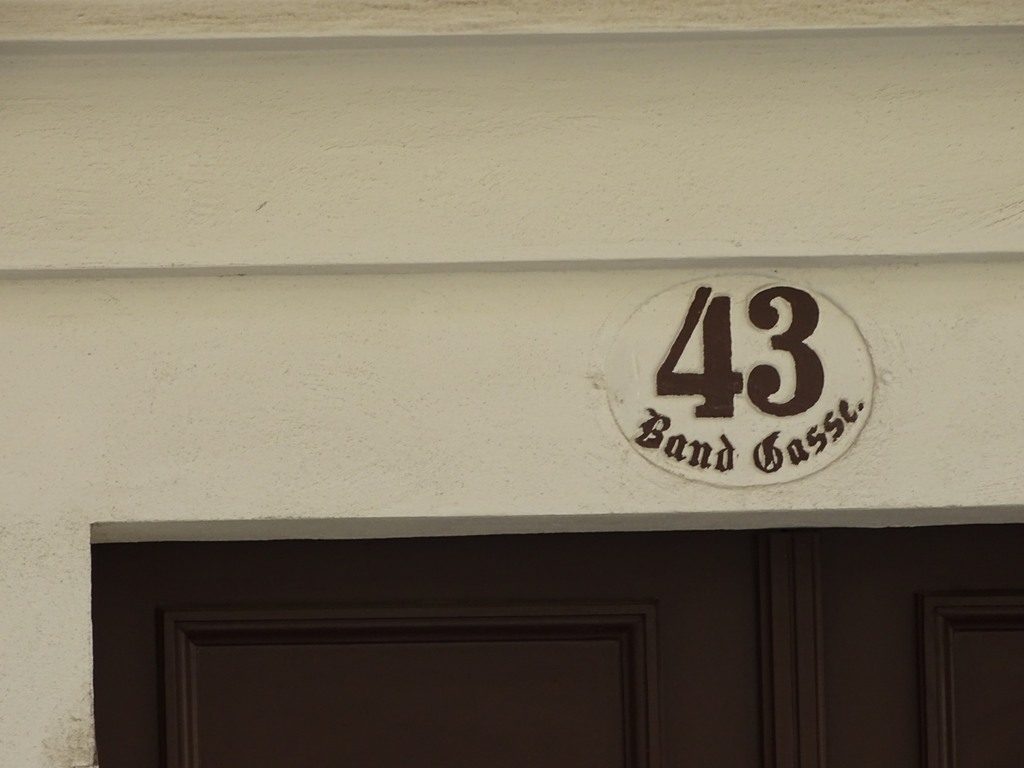
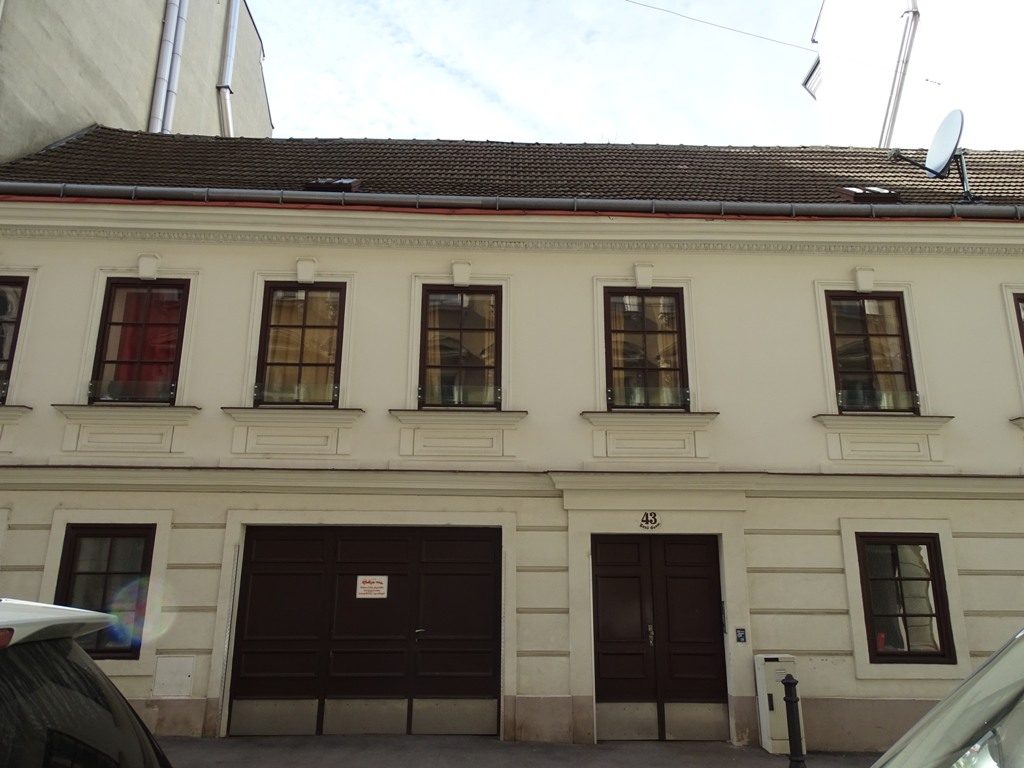
So we have walked through Bandgasse in Vienna from beginning to end. Particularly noteworthy are the many facades, all of which are crying out to be photographed and admired.
Helpful weblinks
AEIOU: Das kleine Volksblatt, last accessed: February 26nd, 2019
ANNO: Wiener Weltausstellungs-Zeitung von 8. Februar 1973, last accessed: February 26nd, 2019
Wien Geschichte Wiki: Bandgasse, last accessed: February 26nd, 2019
Wien Geschichte Wiki: Benedikt Hainrizi, last accessed: February 26nd, 2019
Wien Geschichte Wiki: Das kleine Volksblatt, last accessed: February 26nd, 2019
Wien Geschichte Wiki: Herrengasse (7), last accessed: February 26nd, 2019
Wien Geschichte Wiki: Joseph Orient, last accessed: February 26nd, 2019
Dieser Beitrag wurde erstmals am 27.02.2019 veröffentlicht und aktualisiert.
© Photos: Veronika Fischer
Originally written in German by Veronika Fischer
Translated by Veronika Fischer

